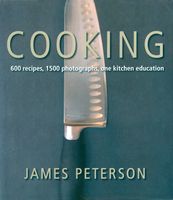Advertisement
What is an Emulsion?
Published 2007
Most sauces that contain fat, such as egg yolks, butter, cream, or oil, are emulsions. In the simplest terms, an emulsion is produced on a microscopic level when particles of fat are surrounded with molecules of an emulsifier, such as the protein in cream or egg yolks. The emulsifier has one side that is soluble in fat and the other that is soluble in water. The fat-soluble side embeds itself into the fat particle, while the water-soluble side protrudes out. These protruding molecules keep the particles of fat from touching one another and coalescing from two particles into one ad infinitum, which is what happens when an emulsion such as a mayonnaise “breaks” and separates into oil and liquid. An emulsion can be broken by increasing the concentration of fat so much that the fat particles are forced into one another, despite the surrounding coating of emulsifier, and coalesce. Breaking can also occur when certain emulsions are overheated and the emulsifier (usually a protein) loses its structure and stops working as an emulsifier. The reason that cream is a common component of sauces is because it can be boiled (to a degree) without losing its emulsifying properties (see “Why Cream and Not Milk or Half-and-Half?”).

